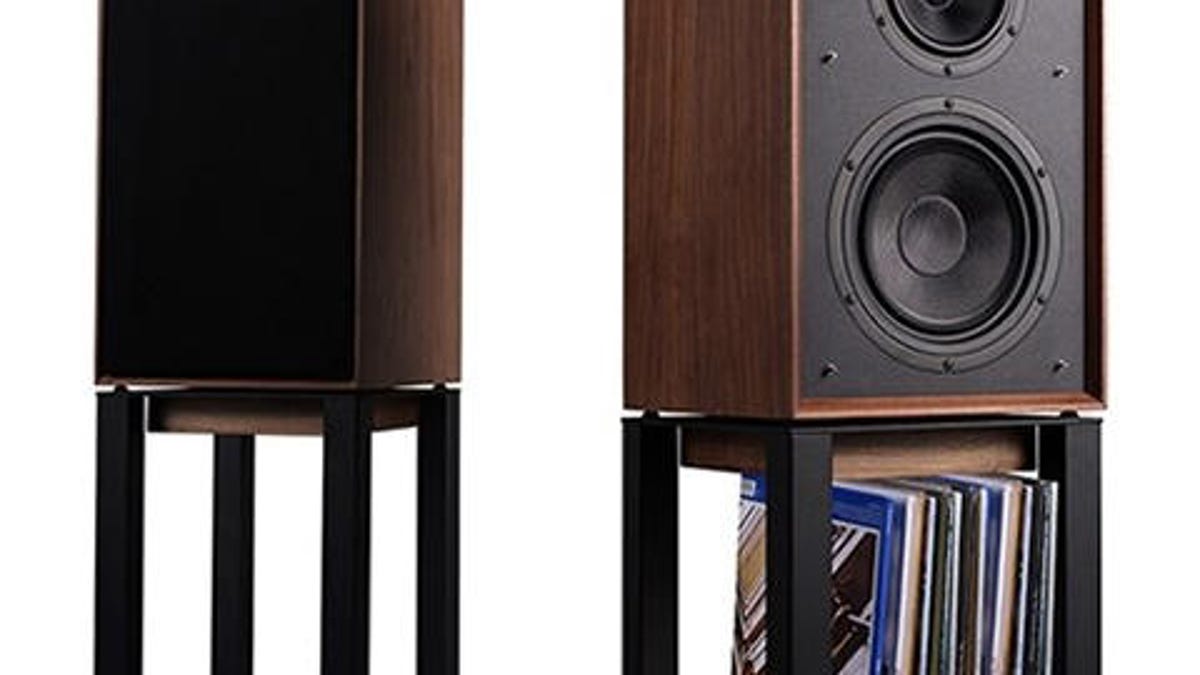Wharfedale Linton Heritage: Old-school looks, new-school sound
Wharfedale updates its '70s Linton stand mount speaker with modern drivers and oodles of slam.

The Wharfedale Linton Heritage speakers
Back in the day, speakers that had any credibility with audiophiles were big, and Wharfedale's revitalized Linton Heritage delivers the sort of big-speaker bravura that pint-size speakers never muster. Small speakers can be good, but not as good as this.
The Wharfedale Linton is a speaker with a history that dates back to 1965. The design was updated and revised a few times before it was discontinued in the early 1980s.
The Linton Heritage is a bona-fide three-way design with an 8-inch (200mm) woven Kevlar woofer, 5-inch (135mm) woven Kevlar midrange, and 1-inch (25mm) soft fabric-dome tweeter. These drivers were designed exclusively for the Linton Heritage; no other Wharfedale speakers use them. The rear panel hosts two large bass ports and high-quality speaker binding posts. The big and beautifully finished cabinet measures 22.2 by 11.8 by 13 inches (565 by 300 by 330mm) and it weighs 40.5 pounds (18.4 kg).
The Linton Heritage's medium-density fiberboard/chipboard sandwich cabinet construction is unusual. You see, most speaker cabinets are solid medium-density fiberboard. By contrast the Linton's chipboard mix of large and small chips in a resin base forms a "lossy" path for sound to pass through. Wharfedale claims panel resonances in a chipboard cabinet tend to be widely distributed over multiple frequencies and are lower in level than what's heard from MDF cabinets. The result is reportedly cleaner sound from the drivers.
The Linton Heritage's real wood veneers in walnut or red mahogany are stunning. Even the back and bottom panels of the speaker are veneered.
Impedance is rated at 6 ohms but dips down to a minimum of 3.5 ohms; the Linton Heritage should be used with amplifiers designed to work with low-impedance speakers.
The optional, steel speaker stands perfectly complement the look of the Lintons and I like that these 17-inch-tall (432mm) mounts can handily store 50 or so LPs.
Wharfedale speakers are designed and engineered in England, but the parent company, International Audio Group, is in Shenzhen, China. Wharfedale manufacturers every part of the Linton in their 1.5 million square foot factory in Jiangxi Province, China.
Relaxing with the Lintons
A comfortable-sounding speaker, the Linton Heritage sounds sweet at all volume levels. If you've never lived with a speaker as large as these you don't know what you've been missing.
From the look of it you might expect the Linton Heritage to sound "old," or just polite, but I assure you, it sounds like a 21st-century design, one with a lot of "slam." Lintons can party like it's 2019.
I used the Linton Heritage with a few different power amps: a Bel Canto REF500S, Schiit Aegir and a First Watt F7. The speakers are best when placed angled in toward the main listening position. While I generally prefer listening to speakers with their grilles removed, the Linton Heritages were at their best with grilles in place.
Indie rockers Cracker's Garage d'Or album demonstrated the Linton Heritage's stamina under pressure. I pushed the volume higher and higher and heard no complaints from the speakers, the funky-cum-rootsy rock just sounded better and better.
Bass was deep, deftly handled, and kicked like a mule on Moby's Play album. The Linton Heritage may look like a traditional British speaker from the 1960s or '70s, but it sounded thoroughly modern.
Sofia Gubaidulina plays classical accordion with abandon on the Killing of the Sacred Deer film soundtrack, and her music fully energized the Linton Heritages. The score is at times moody, disturbing and thrilling. The recording's sound quality is superb, the Linton Heritages made that abundantly clear.
Still, they don't have the transparency of a Magnepan .7 panel speaker, but the Linton Heritage's bass punch clobbers both the .7s and the Revel Concerta2 M16 bookshelf speakers I reviewed last week. (That one's sweeter treble betters the Linton Heritage's however.) The Lintons' soundstage never felt cramped, and center focus was spot-on.
Vocals on the a cappella group the Persuasions' Grateful Dead tribute album, Might As Well, had equal helpings of body and soul. The Linton Heritage treats midrange well, but then again it's a three-way design with a midrange driver. That's a rarely seen feature on speakers in the Linton Heritage's price class.
The Wharfedale Linton Heritage sells for $1,198 per pair in the US, £999 in the UK; while the optional steel stands run $300 per pair and £100 in the UK. If the Lintons are too big or expensive, check out my Wharfedale Denton review -- they sell for $899 a pair in the US and £549 in the UK.

